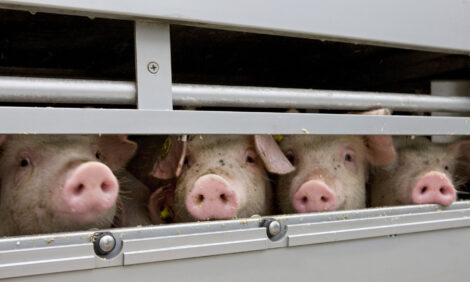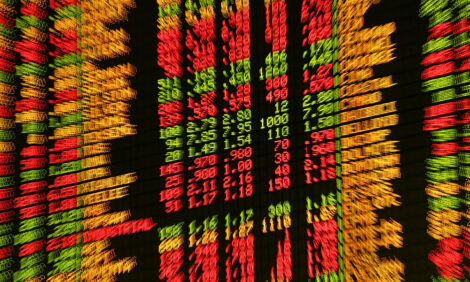



CME: Meat, Poultry Prices Continue to Rise Faster than General Inflation Rate
US - US consumer level meat and poultry demand has performed well so far in 2014, report Steve Meyer and Len Steiner.The release of February trade data on Friday completes the information needed to compute demand indexes and real per capita expenditures for the first two months of 2014 and the news for February is quite positive for meat/poultry proteins. The following chart shows historical annual demand indexes for the four major species through 2013 and the index for the 12 months ended in February as the 2014 observation. We use the trailing 12 months for he current year in order to capture all seasonal influences on the index. With only 2 months of actual 2014 data included, the final observation should obviously not be much different from the observation for 2013.

The indexes for the past 12 months indicate that pork demand is quite strong while the other species have weakened slightly. But all of that weakness for beef and chicken occurred in January and indexes for both species rebounded in February. The chart below shows monthly real per capita expenditures (computed using virtually the same data as that used for the demand indexes) for the four major species. After a January figure 3.3 per cent lower than one year ago, February’s RPCE grew by 3.4 per cent versus 2013 leaving YTD RPCE unchanged. Beef RPCE for February was up 2 per cent year –onyear after trailing 2013’s level by 4.8 per cent in January. Chicken’s February RPCE was 3.4 per cent higher, offsetting a good portion of the 8.4 per cent decline in January. Pork has enjoyed the best 2014 of all species with year-on-year monthly gains of 6.1 and 7.2 per cent thus far in 2014. After a terrific Q4-13, turkey RPCE has once again struggled, falling by 4.4 per cent and 4.8 per cent relative to last year in January and February, respectively.

We still believe that consumer preferences are a primary driver of these changes. Real per capita disposable incomes have finally helped but year-on-year growth rates of 2 per cent in January and 1.4 per cent in February are not what we would call robust. Relative to the average of 0.1 per cent over the past 5 years, those are pretty good numbers but... Further, meat/poultry prices continue to rise faster than the general inflation rate, a fact that should work against meat demand. So, in spite of a seemingly unending barrage of negative news —whether deserved or not — meat preferences appear to be growing. We think renewed attention to and concern about dietary protein is a major reason for this apparent shift.
“But high prices are going to destroy demand.” Forgive us for getting on our soapbox again but that statement casts an underserved negative light on demand. Supply reductions do indeed drive higher prices and higher prices do indeed drive a reduction in consumption or quantity demanded. But lower consumption/quantity demanded is necessary because supplies are smaller. Consumers can’t buy/eat as much because there isn’t as much product available! That, however, doesn’t mean DEMAND has changed. As can be seen in the diagram below, a lower supply does nothing to demand curve D but does cause the quantity demanded to fall from Q1 to Q2 and prices to rise. If you want to argue with that, consider the opposite: Would you say demand is “created” if supply increased?









